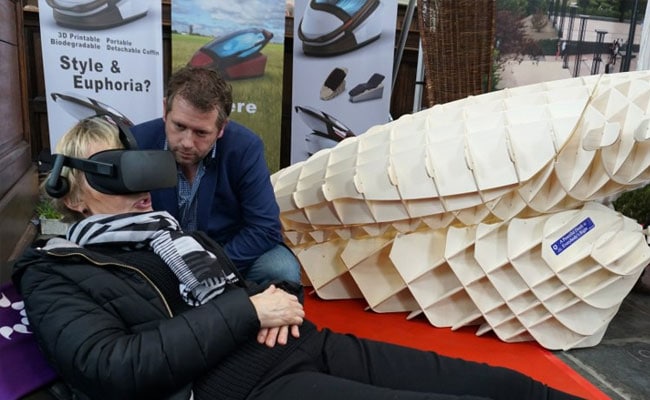INSUBCONTINENT EXCLUSIVE:
Euthanasia is not legal in most places, but is legal in several European countries and in parts of the US
It's not the most cheerful offering
But euthanasia activist Philip Nitschke thinks he's about to revolutionize how we die.At a funeral fair in Amsterdam last week, he showed
off his "suicide machine." The "Sarco," short for sarcophagus, is designed to "provide people with a death when they wish to die," Nitschke,
an Australian national, told the news agency Agence France-Presse
It comes with a detachable coffin and a hookup for a nitrogen container.Here's how it would work, according to Nitschke
Users would first take an online test to determine whether they were sane
If they cleared the test, they would be sent an access code, valid for 24 hours
They'd then get into the capsule, close the door and press a button to have the nitrogen pipe in
Nitschke says users would pass out within a minute."The person who wants to die presses the button and the capsule is filled with nitrogen
He or she will feel a bit dizzy but will then rapidly lose consciousness and die," he told AFP.The Sarco's design is meant to echo that of a
spaceship, Nitschke told Newsweek
It is intended to give users the feel that they are traveling to the "great beyond."Nitschke developed the Sarco alongside Dutch designer
At the event, people also had an opportunity to don virtual-reality glasses that give users a sense of what sitting in the pod might look
Attendees at the Westerkerk event lined up to try on the glasses, AFP reported.The inventors said they hope to have a fully functioning pod
Nitschke then plans to put the design online and allow anyone to download it
"That means that anybody who wants to build the machine can download the plans and 3D-print their own device," he said, according to AFP.The
machine has been controversial since its inception.One critic, Georgetown professor of biomedical ethics Daniel Sulmasy, told Newsweek that
it's "a bad medicine, ethics, and bad public policy.""It converts killing into a form of healing and doesn't acknowledge that we can now do
more for symptoms through palliative (care) than ever before," Sulmasy said.Nitschke, 70, has been a euthanasia advocate for decades
As a medical student, he said, he was inspired by Jack Kevorkian's work
(Kevorkian, an American pathologist nicknamed Dr
Death, said that he helped at least 130 patients commit suicide before he died in 2011.) As a young man, Nitschke created the "Deliverance,"
a computer program hooked up to an IV that would trigger a lethal injection of barbiturates after a patient confirmed that he or she wanted
Later, he developed something called an "Exit Bag," a breathing mask that funnels carbon monoxide.Nitschke used the system on four patients
before Australia's euthanasia law was rescinded
In 1997, he founded Exit International, a euthanasia advocacy group
Newsweek has called him the "Elon Musk" of assisted suicide.Euthanasia is not legal in most places, but it is legal in several European
countries and in parts of the United States
Nitschke told AFP that his machine will allow those interested in euthanasia an easier path forward
"In many countries, suicide is not against the law, only assisting a person to commit suicide is," he said
"This is a situation where one person chooses to press a button rather than, for instance, standing in front of a train.(This story has not
been edited by staff and is auto-generated from a syndicated feed.)

